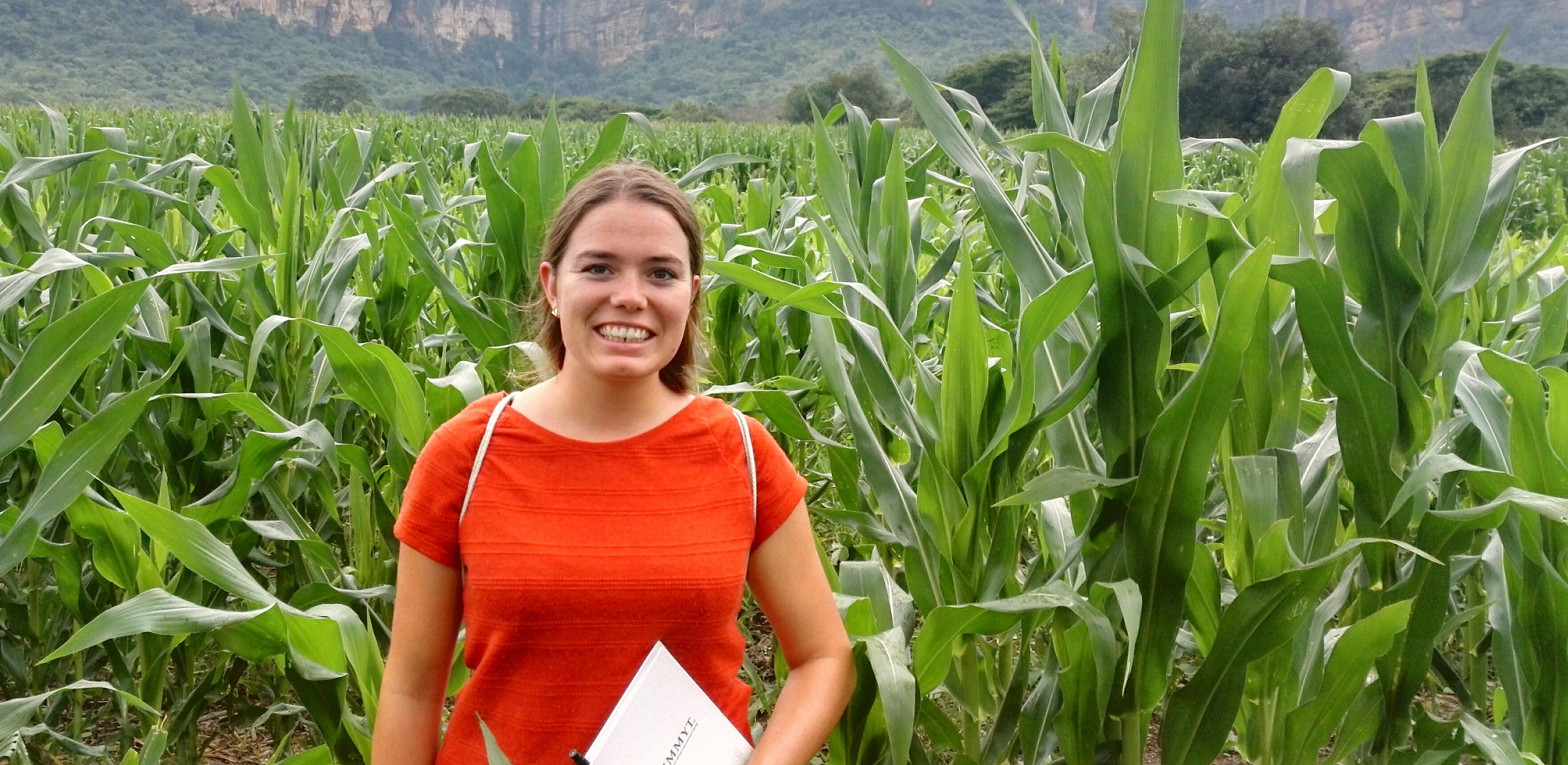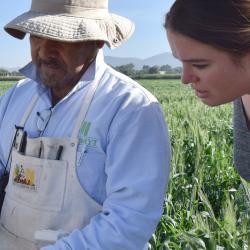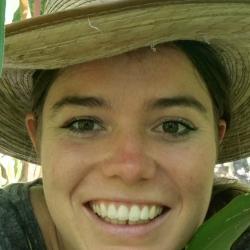
Submitted by Administrator on Tue, 01/05/2018 - 15:42
Meet Lisanne Meulendijks
Lisanne Meulendijks is an early career researcher who loves being out in the field. She wants to understand the interaction between agro- and ecosystems and she’s doing it by talking to the people whose livelihoods depend on the environment. She’s travelling to Mexico to meet smallholder farmers and find out how they operate. By learning about their experiences she hopes to understand the complex realities of farming at the forest frontier in Mexico, and gather information that will inform future conservation approaches.
Q: Where are you from?
A: I’m from the south of The Netherlands, near Eindhoven
Q: Can you tell me something about the food there?
A: As an international student I’ve often been at events where we had to bring food from our home country, and I’ve always struggled. Our syrup waffles, or stroopwafels, are really good; everyone loves them. We lack a real food culture, but have influences from lots of other countries, particularly Indonesia because of its’ historical links with The Netherlands. A lot of Dutch people regard the traditional Indonesian dishes as traditional Dutch.
Q: Why are you here?
A: I came to Cambridge in October last year after finishing my Masters’ degree in Agro- and Ecosystems engineering, in Belgium. There, I was learning about how to make small-holder farming systems sustainable and reduce their impact on the environment. When I saw a PhD position advertised here for a new project in exactly that area I applied straight away. It’s very specific but it really fits what I did before. The link between agricultural production and the ecosystem surrounding it is at the core of my research.
Q: What’s your research purpose?
I’m working on a project called Assessing the Role of Forests and Landscapes in relation to Climate Change, Agricultural Production and Livelihoods. It’s led by Professors Andrew Balmford, Bhaskar Vira and David Coomes at the University of Cambridge Conservation Research Institute. We’re trying to compare three different strategies to conserve forests.
The first is by designating them as protected areas. The second is the ‘land-sparing’ idea of intensifying agricultural production, which reduces the land area needed and eases pressure on the forest. But the team has proved that this doesn’t necessarily work. Forests close to households can be important for a diverse diet, and as a source of firewood and livestock feed. Finally we’ll look at a combination of these interventions, trying to actively protect the forest while increasing agricultural production.
We’re testing the idea that conservation objectives are likely to be met when interventions recognise the need to link forest protection with efforts to improve farm-based production, so that people’s needs are met alongside a slowdown in deforestation.
Q: Where are you going?
A: I’m going to meet farmers in Mexico to try and assess the impact of these different interventions and compare them. Mexico is where Norman Borlaug, dubbed the ‘father of Green Revolution’, started his research and there’s still a lot of monitoring of agricultural activities there. Lots of programmes have been implemented in Mexico with the belief that sustainable rural development in combination with forest conservation is the best conservation measure, but no-one has actually tried to quantify this. If we prove it works, we can better promote the approach in other places.
Finding five examples of each type of intervention is the first challenge! I’m going on a two-month pilot trip to test my methodologies for assessing things from household diet diversity, to farm productivity, to the ways farmers interact with nearby forests. Luckily I know the country and the culture, as I did some research at CIMMYT – the International Maize and Wheat Improvement Centre – in Mexico two years ago. And I speak Spanish, which is essential!
Lisanne discusses wheat pollination in Mexico
Q: Do you feel part of something bigger than yourself?
A: Yes. I work as part of a larger interdisciplinary project team in Cambridge. I also love interacting with the farmers; it’s one of the most important learning exercises to hear about their experiences. These people live so close to the environment and they depend on it. They are facing a lot of problems due to climate change, and they’ve been trying to improve their agricultural practices to survive. For example in Yucatan, in the south of Mexico, there’s been drought and they haven’t had a good rainy season for three or four years. Farmers there have had harvests reduced to virtually nothing, which impacts the whole family. Climate change is a confounding factor to our project because it’s hitting crop production so hard.
Q: What’s the one piece of advice you’d give to others who want to follow in your footsteps?
A: Be open to opportunities, and try to get involved. There are so many initiatives out there and there’s always the opportunity to contribute. I was Vice President of Communication of the International Association of Agricultural Students (IAAS), which is how I got to know a lot of people and projects. Now I’m an Ambassador for the Thought for Food Challenge – a global initiative to encourage students to come up with ideas to feed nine billion people by 2050. It’s a network that offers opportunities for people interested in these subjects. I try to spread the word and support students who apply.
Q: What would make the world a better place?
A: People becoming more conscious of their consumption patterns. This relates to food choices like buying meat, because our meat consumption habits have a serious impact on the environment. Red meat is responsible for up to 40 times as many greenhouse gas emissions as vegetables and grains. And people thinking more about whether they really need things before buying in general. This could really help reduce our footprint on the planet.



